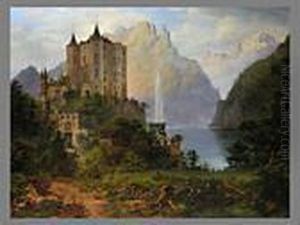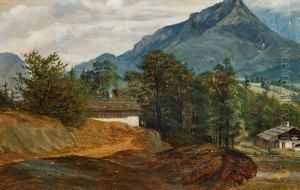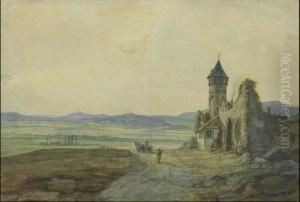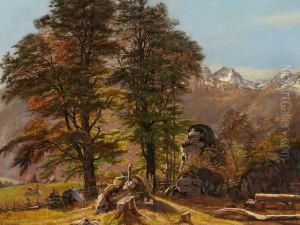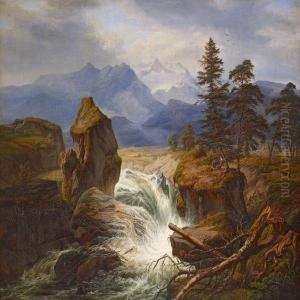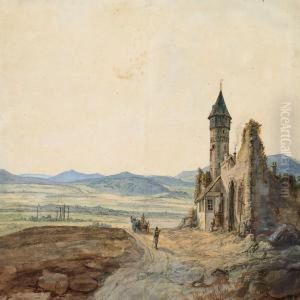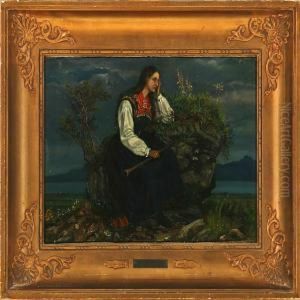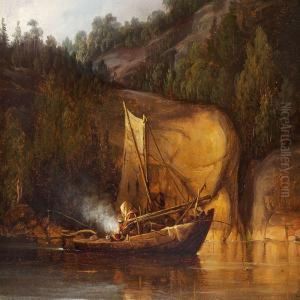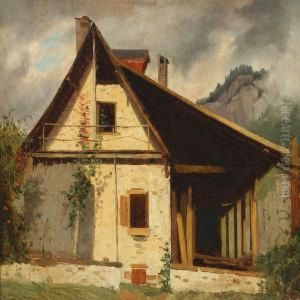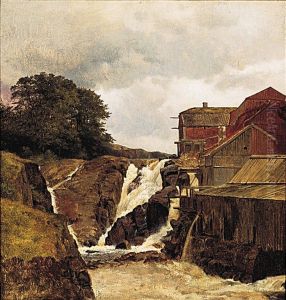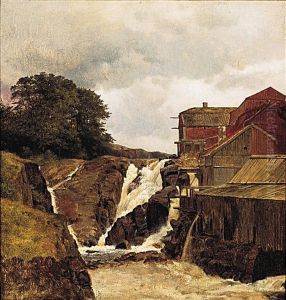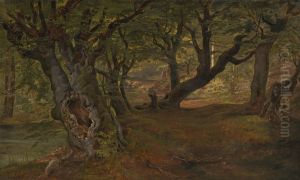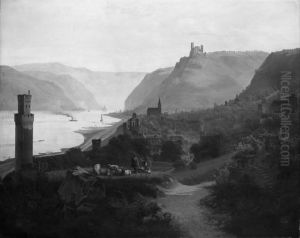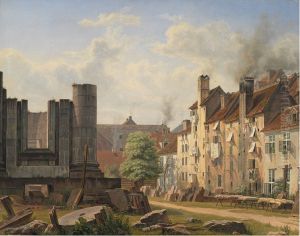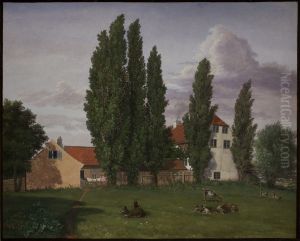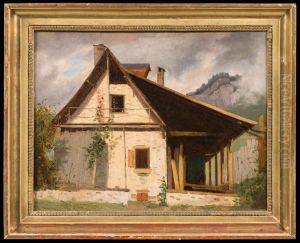Frederik Sodring Paintings
Frederik Christian Sødring was a Danish landscape painter, born on January 16, 1809, in Copenhagen, Denmark. He was part of the Golden Age of Danish Painting, a period that is marked by the production of many masterpieces of art following the defeat of Denmark in the Napoleonic Wars.
Sødring began his artistic education at the Royal Danish Academy of Fine Arts in Copenhagen, where he studied under Christoffer Wilhelm Eckersberg, who is often considered the father of Danish painting. Under Eckersberg's tutelage, Sødring honed his skills in landscape painting, learning to capture the beauty of the Danish countryside with a naturalistic approach that was characteristic of the period.
Throughout his career, Sødring was influenced by the Romantic movement, which was sweeping across Europe at the time. His landscapes often depicted the grandeur and drama of nature, with a particular focus on the interplay of light and shadow. He is known for his atmospheric portrayals of the Danish coastline and countryside, which he rendered with meticulous attention to detail and a deep appreciation for the natural world.
Sødring's work was well-received in his lifetime, and he exhibited frequently at Charlottenborg Exhibition Hall, the official exhibition gallery of the Royal Danish Academy of Art. However, his career was relatively short-lived, as he passed away on March 18, 1862, in Copenhagen. Despite his early death, Sødring left behind a body of work that continues to be celebrated for its contribution to Danish art and the larger Romantic movement in landscape painting.
His paintings can be found in various museum collections, including the National Gallery of Denmark (Statens Museum for Kunst) and the Hirschsprung Collection. Sødring's legacy persists through his influence on subsequent generations of Danish artists and his role in shaping the Golden Age of Danish Painting.
